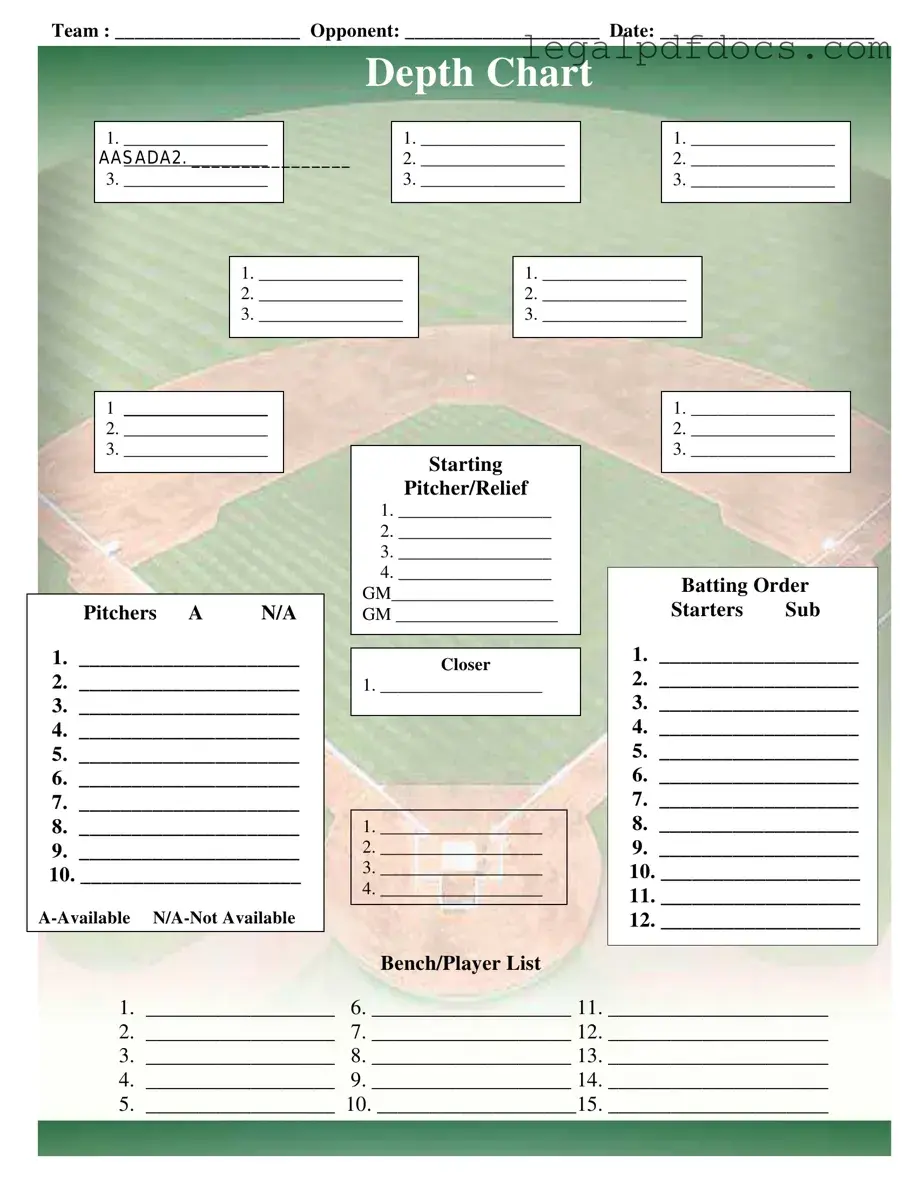Fill Out a Valid Baseball Field Lineup Template
The Baseball Field Lineup form is an essential tool for organizing a baseball team's roster, ensuring that players are clearly designated for their positions during a game. This form captures important details such as team names, dates, and player assignments, including starters and substitutes. For a smooth game day experience, be sure to fill out the form by clicking the button below.
Open Baseball Field Lineup Editor Here
